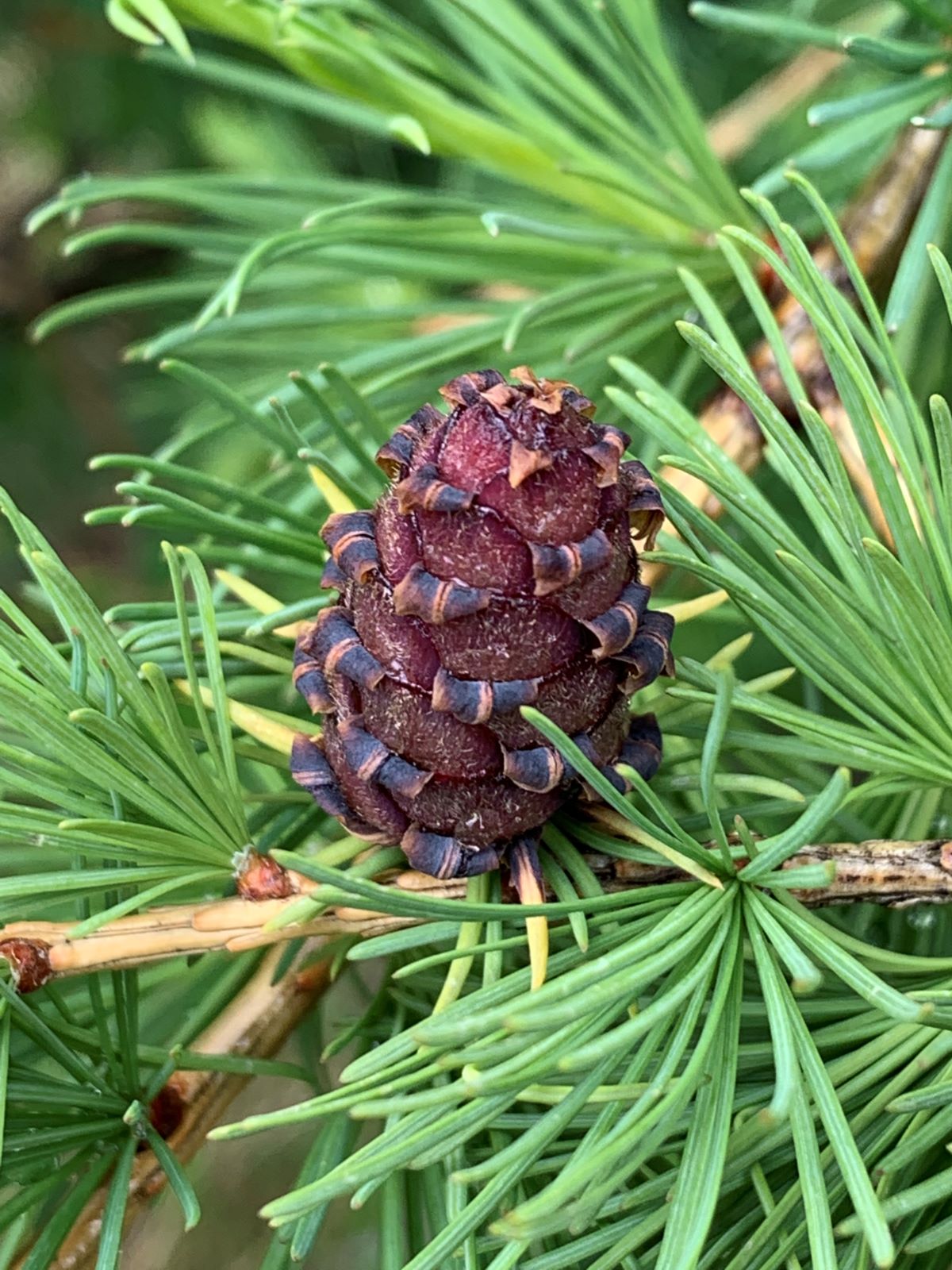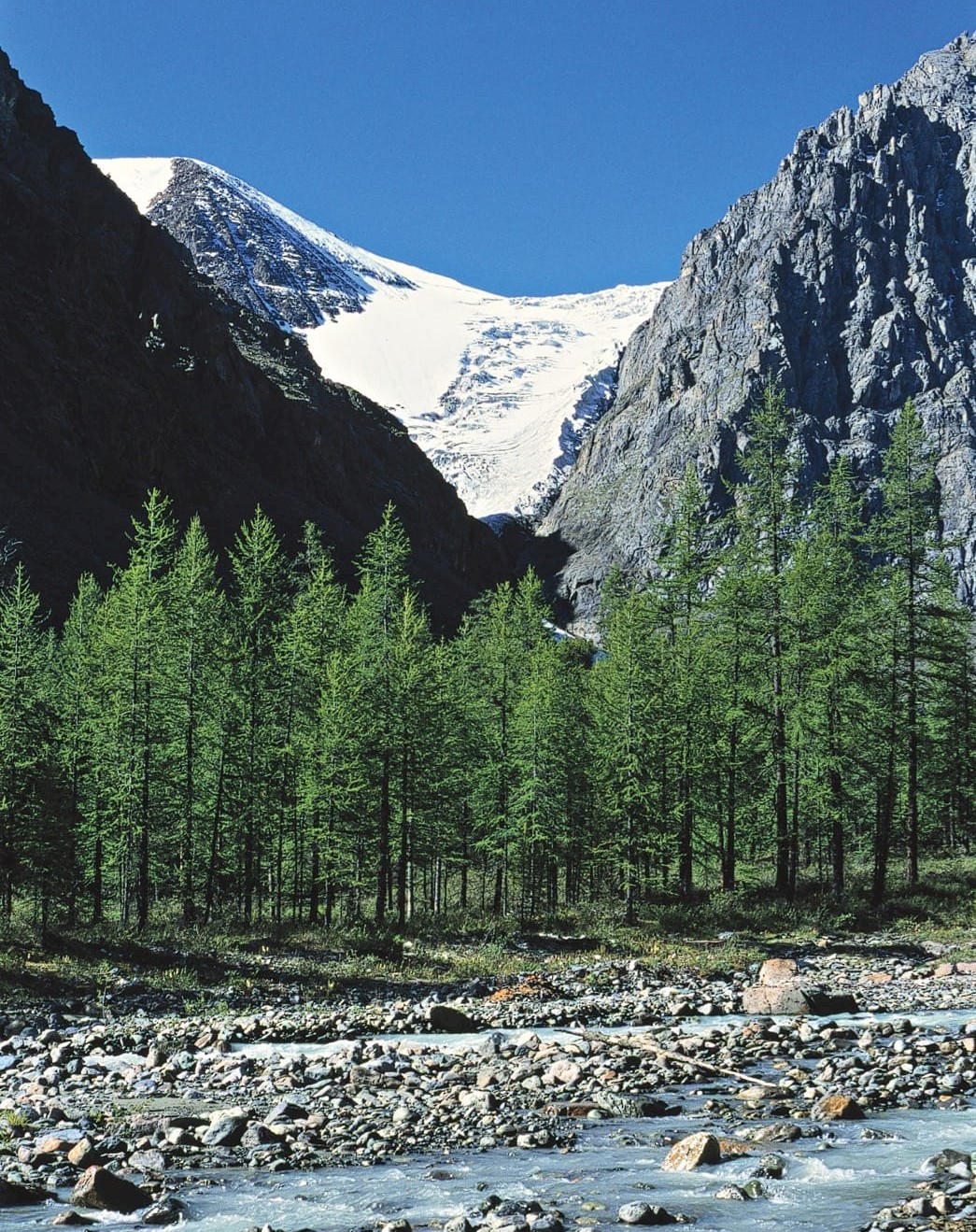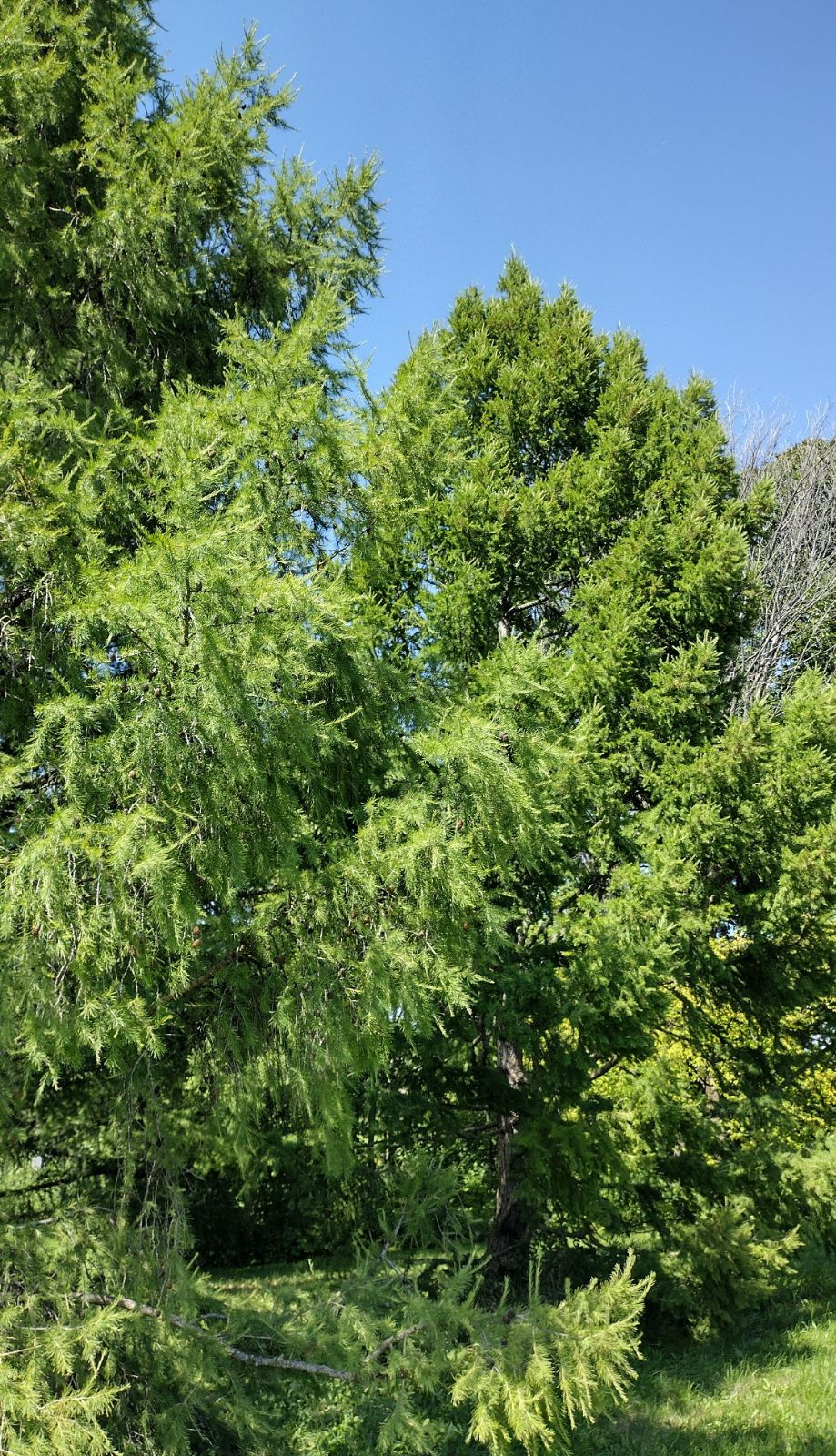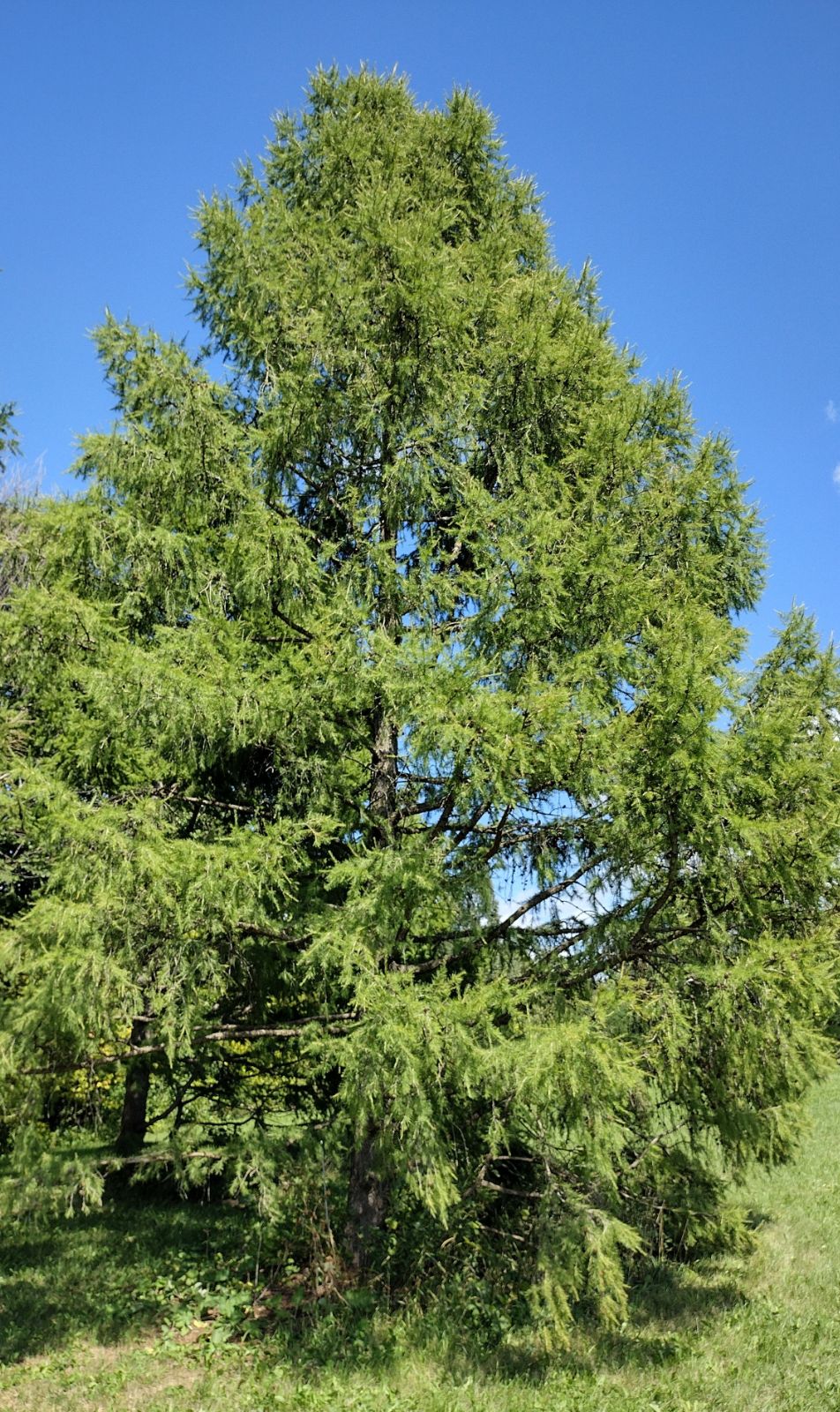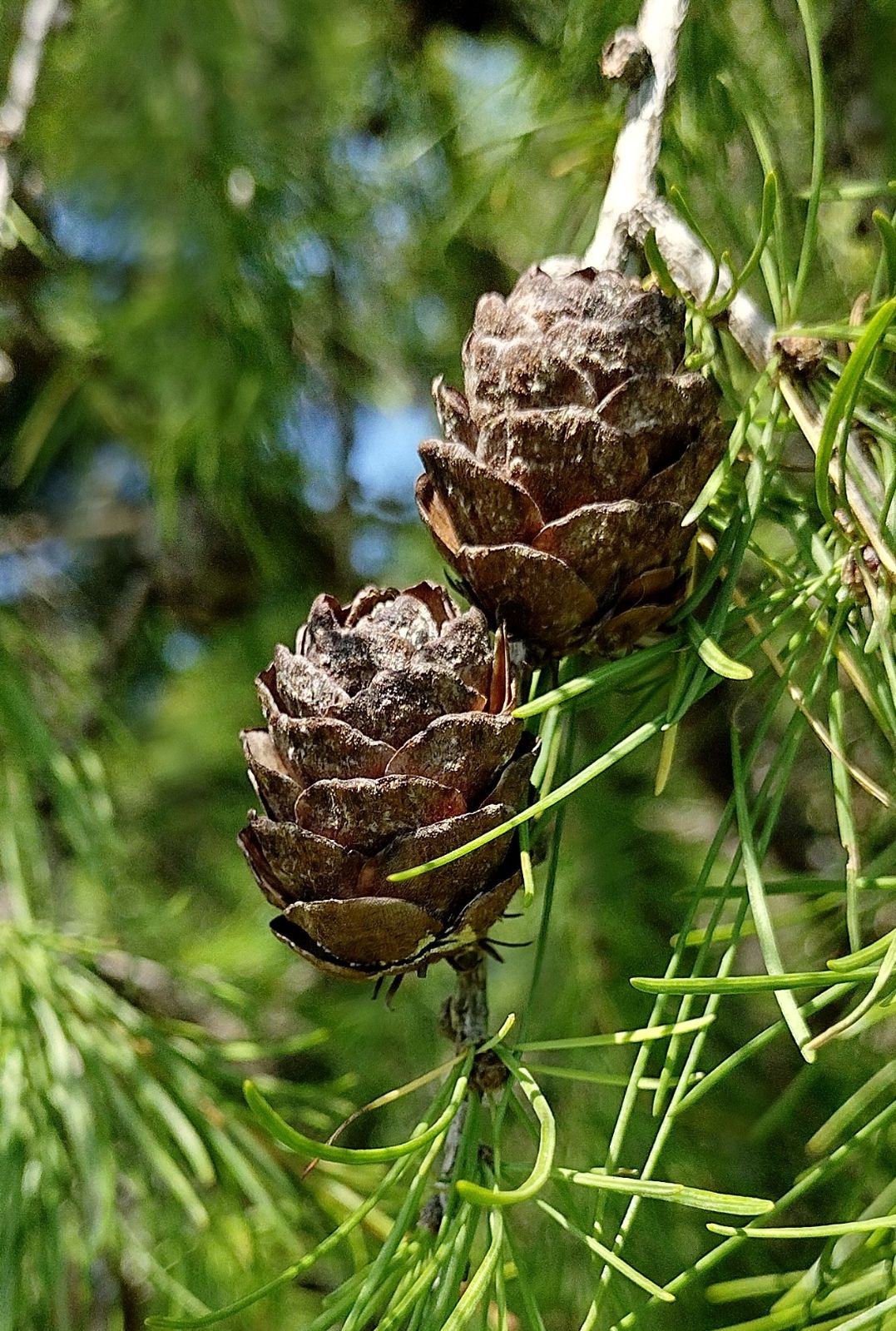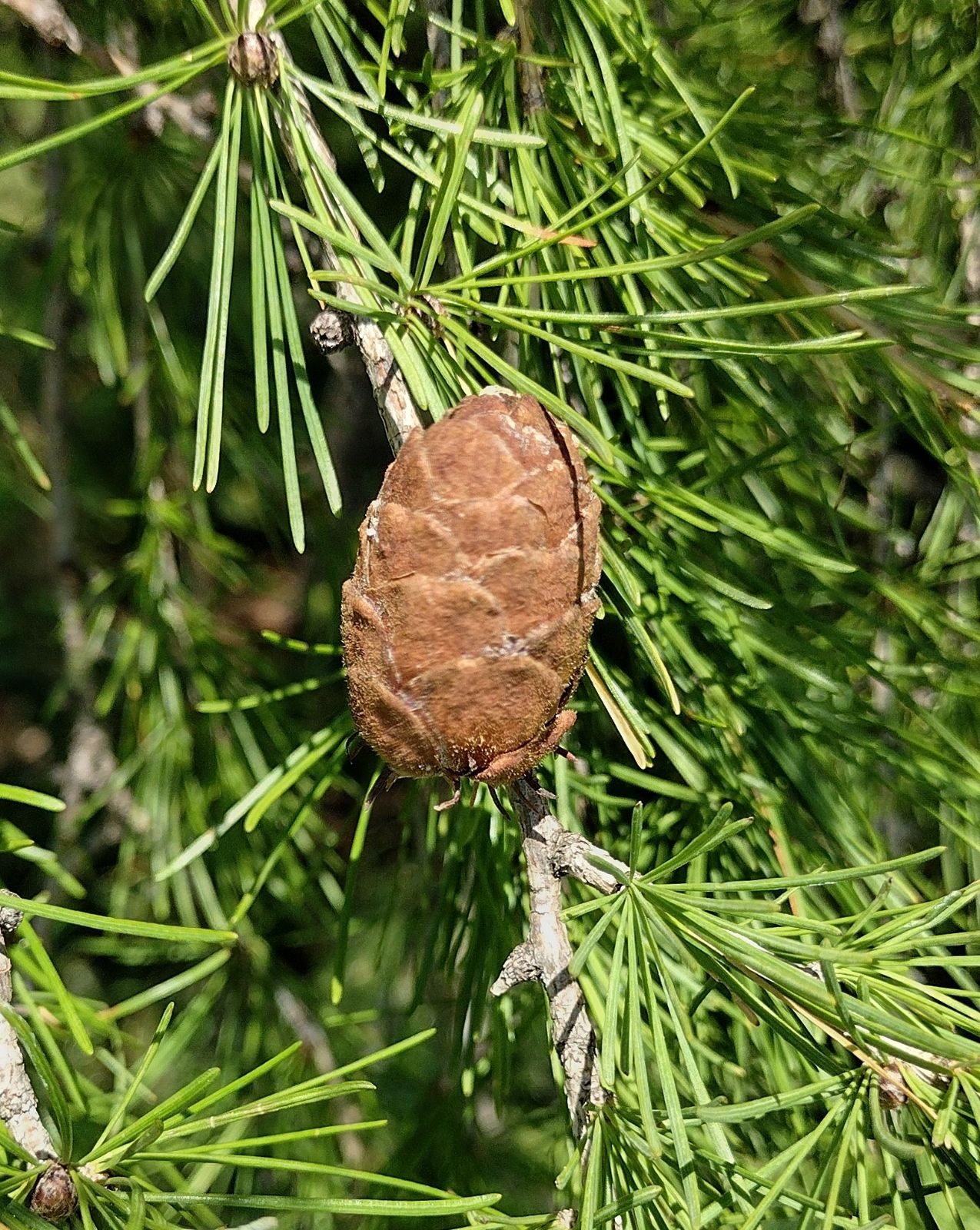Larix sibirica
Sponsor
Kindly sponsored by
This genus has been sponsored and new text is being prepared.
Credits
Article from New Trees by John Grimshaw & Ross Bayton
Recommended citation
'Larix sibirica' from the website Trees and Shrubs Online (treesandshrubsonline.
Genus
- Larix
- Sect. Larix, Ser. Larix
Common Names
- Siberian Larch
Synonyms
- L. russica (Endl.) Sabine ex Trautv.
- L. sukaczewii Dylis
Tree to 40 m, 1–1.5 m dbh. Bark light orange-brown or grey, becoming light grey-brown, rough and scaly. Crown broadly conical and irregular. Branchlets slender, flexible, dull red-brown to grey, glabrous, grooved; short shoots 0.4–1 cm long; vegetative buds not resinous. Leaves light green, turning yellow in autumn, (2–)2.5– 4(–5) × 0.05–0.1 cm, soft and flexible, faint keel on lower surfaces, apex obtuse to acute; 20–40 leaves per short shoot. Male strobili 0.5–1 × 0.5–0.6 cm, pale yellow. Female cones on thick, curved peduncles, ovoid-subglobose, (2.5–)3–4.5(–5.5) × (1.8–)2.5–3.5(–4) cm, red or rose-green, turning light red-brown when mature. Seed scales 25–40, suborbicular to ovate, 1.2–2 × 1.2–1.8 cm. Bract scales ligulate-linear, included; in immature cones, the bract scales are distinctively reddish brown with a central green stripe. Seeds light brown, ovoid-cuneate, wings reddish brown or orange-brown, oblique-ovate, 0.8–1.6 cm long. Farjon 1990, Fu et al. 1999c. Distribution CHINA: Xinjiang, Xizang; MONGOLIA; RUSSIAN FEDERATION: Altai, Irkutsk, Krasnoyarsk, Tuva, West Siberia. Habitat One of the characteristic tree species of the taiga, from close to sea-level, it also occurs in the Altai mountains up to 2400 m asl. USDA Hardiness Zone 2. Conservation status Lower Risk. Illustration Farjon 1990; NT434, NT441. Cross-references B520; K163 (as L. russica). Taxonomic note Trees from the west of the range (west of the Ob-Irtysh drainage) are sometimes distinguished as L. sukaczewii Dylis or L. sibirica var. sukaczewii (Dylis) Gorchakovsky & Shiyatov. This differs in having broader cones with broad, incurved scales; it is not generally considered sufficiently distinct for specific recognition (Farjon 1990), though does show genetic differentiation (Farjon 1990), and recognition as a variety appears justified. Larix sibirica forms a hybrid zone with L. gmelinii in the east of its range, the hybrid being named L. × czekanowskii Szafer.
The cultivation of Larix sibirica in the British Isles has been attempted many times, from as early as 1806 according to Elwes & Henry (1907), but the comment of those authors, ‘It appears to have no value in this country’, sums up the situation well. Nonetheless, it is still being planted (sometimes as var. sukaczewii), and occasional lingering specimens may be found. An individual at Kew, obtained from Göteborg Botanic Garden in 1969, is a case in point, being a small misshapen tree with very long branches but no leader. Occasionally one will do reasonably well, as for example the British and Irish champion at Birr Castle, Co. Offaly, measured at 16.5 m (32 cm dbh) by Aubrey Fennell in 2004 (TROBI). As with some of the northern species of Abies and other genera, mild winters cause the trees to shoot too early, with consequent frost damage and general debilitation. Outside the British Isles, it is a different story. It grows with better success in Scandinavian and eastern European collections, although even at Rogów (where there are 54 specimens) it is ‘rather weak and not as strong and healthy as L. decidua’ (P. Banasczak, pers. comm. 2007). There is a good example of var. sukaczewii, about 18–20 m tall, at Hørsholm in Denmark, and this variety has also proved the best tree for forestry planting in Iceland and southwest Greenland (Ødum 2003), showing better growth and greater resistance to larch canker Lachnellula willkommii than trees of central Siberian origins (Blöndal & Snorrason 1995). Many, if not most plants in European cultivation are likely to refer to this taxon. As is perhaps to be expected, young trees at the University of Minneapolis Landscape Arboretum are thriving in the extreme continental climate of Minnesota. When seen in 2006 these were clad in vigorous new growth, with the dense plumy foliage on the long shoots being particularly attractive. The taller specimens were at least 10 m in height, and the largest in the group had a dbh of 24 cm. More surprising was to find a large, mature tree, at least 15 m tall, looking very well at the Arnold Arboretum and bearing a note on the label saying ‘H.J. Elwes 1900’. This would suggest that it was grown from seed Elwes collected himself on his journey to the Siberian Altai in 1897; in The Trees of Great Britain and Ireland (Vol. II, 1907), however, he says that his own experiments at Colesbourne were made with seed sent to him from the Altai in 1902. These saplings were not successful even in ‘a very cold and exposed situation’ – of which there seem to be many at Colesbourne, though evidently not sufficiently so for this species. Elwes (1935) bemoaned the excessive felling in the Altai, but a hundred years later there were still fine large trees of L. sibirica to admire there (JMG, pers. obs. 1997).

